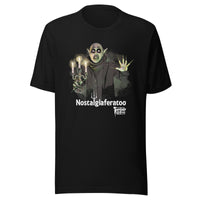8 quick facts about 'Smokey and the Bandit'

Image: The Everett Collection
Star Wars, Star Wars, Star Wars!
All this hype overshadows another worthy celebration. This is also the anniversary of Smokey and the Bandit. The yee-haw smuggler story Smokey and the Bandit — the first part of an unlikely trilogy itself — was released the same weekend as Star Wars, two days later on May 27. With his hirsute manliness and charm, Burt Reynolds had millions of fans proclaiming, "May the Coors be with you!" (Okay, not literally.)
We know that not everyone loves Star Wars. For those we offer a bit of counter programming. Here are some facts to help you make the case that Smokey and the Bandit is the superior movie. We're just playing "Reynolds' Advocate."
1. It beat 'Star Wars' at the box office.

At least for one week, Han Solo was no match for Burt Reynolds. Well, when it came to the bank. Technically. After the cash was tallied on May 30, Smokey came out ahead with $1,728,060 to Lucas' $1,554,475. It should be mentioned that Star Wars was showing on a mere 43 screens while the Bandit was running on 498. I think we know who won in the long run. But still! Additionally, both movies were up for the same Oscar, for Best Editing. Star Wars took that battle as well.
Image: Universal Pictures
2. It was Alfred Hitchcock's favorite movie.

After a tribute screening of Psycho at USC in 2000, Alfred Hitchcock’s daughter, Patricia, set the record straight — the Master of Suspense considered the Burt Reynolds chase flick his favorite movie. Patricia reiterated that her father was a populist. His other favorite? Benji. Take that, Chewbacca!
3. The film popularized the Trans Am.

Han Solo had his Millennium Falcon; the Bandit cruised in a sweet Pontiac with a firebird on the hood. After the premiere of the movie, sales of the Trans Am doubled for the automaker. For the first time ever, it outsold the Camero. Reynolds was given his promotional model of the muscle car in 1977. A couple years ago, the actor auctioned it off. It sold for $450,000.
Image: Universal Pictures
4. The movie helped popularize Coors beer, too.

The plot of the movie likely baffles Millennials. The Bandit must smuggle Coors beer into Georgia. At the time, the "Banquet Beer" was unavailable east of Oklahoma. Because the brewery did not use stabilizers and preservatives, the drink could spoil in a week. Thus, it could not travel far. In 1981, Coors' distribution area expanded across the Mississippi for the first time.
Image: iStock
5. It's theme song was a hit.

Jerry Reed's "East Bound and Down" rocketed to No. 2 on the U.S. Country charts — and even inspired an HBO comedy years later.
Image: Wikipedia
6. It was based on real life.

We're not just talking about the actual smuggling of Coors beer into the Deep South. Buford T. Justice, the titular "Smokey" portrayed by Jackie Gleason, was based on a real man. Yes, there really was a cop named Buford T. Justice. The real B.T.J. was a Florida Highway Patrolman known to Reynolds' father, who himself had once been the Police Chief of Riviera Beach, Florida.
Image: Universal Pictures
7. It has an unlikely link to The Flintstones.

When Smokey and The Bandit aired on network television, much of the language had to be toned down. For example, Justice's catchphrase "Sumbitch!" was altered to "Scum bum!" Most of the leads re-recorded their dialogue. However, Jackie Gleason did not. Instead, Henry Corden, the voice of Fred Flintstone, dubbed in the new dialogue for Buford T. Justice.
Image: The Everett Collection
8. Burt Reynolds was the biggest box office star at the time.

Reynolds was paid $1 million for the role, a quarter of the entire budget. It was worth the investment. At the end of the year, Smokey and the Bandit was the second highest grossing film of 1977. Okay, it might not have beat Star Wars, but it did top Close Encounters of the Third Kind and Saturday Night Fever.
Image: Universal Pictures







2 Comments






























